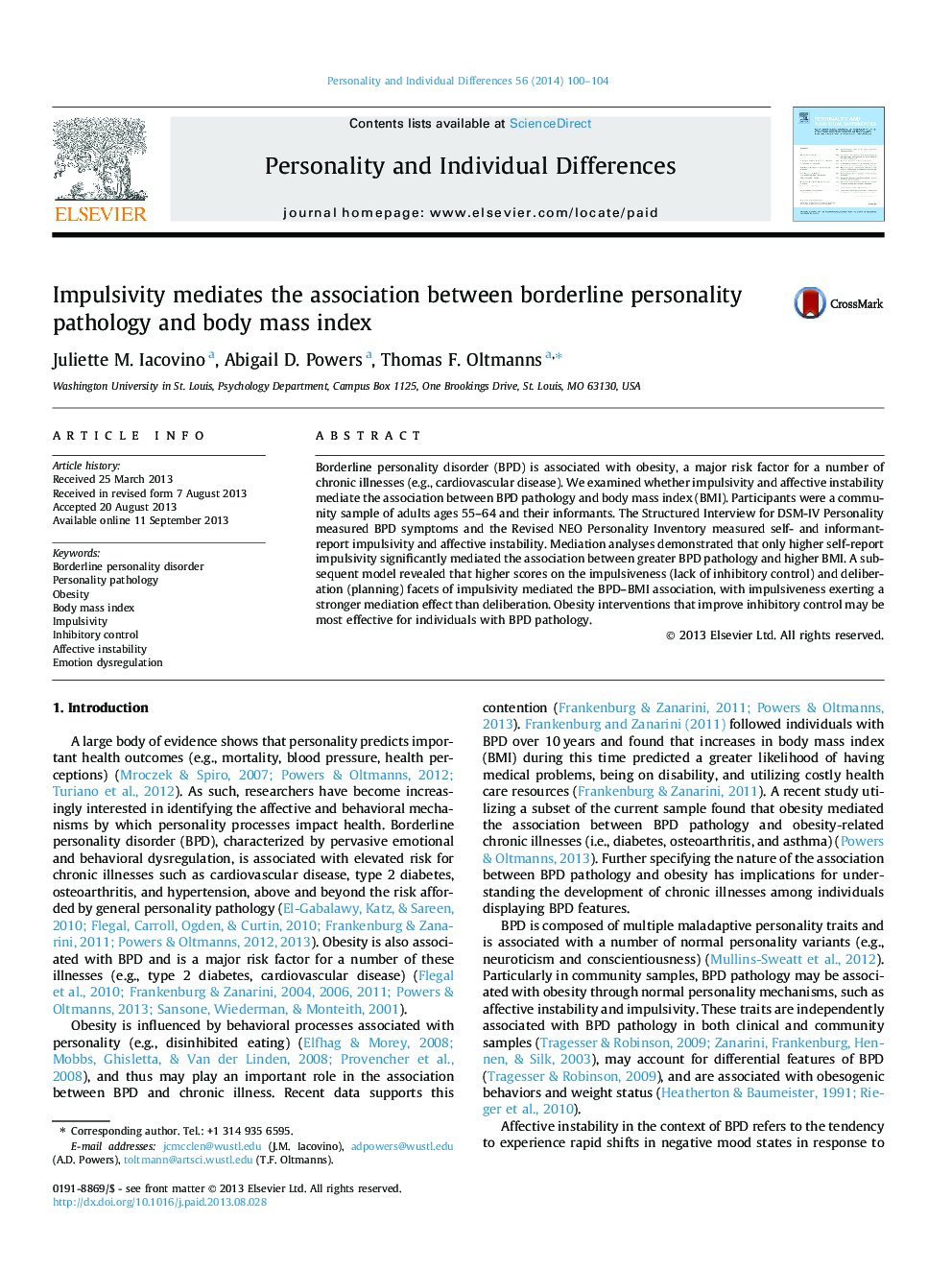| Article ID | Journal | Published Year | Pages | File Type |
|---|---|---|---|---|
| 890566 | Personality and Individual Differences | 2014 | 5 Pages |
•Examined mechanisms of the link between borderline personality pathology and body mass index.•Self- and informant-reported impulsivity and affective instability tested as mediators.•Impulsivity, not affective instability, emerges as a mediator.•Of the impulsivity facets, inhibitory control is a stronger mediator than planning.
Borderline personality disorder (BPD) is associated with obesity, a major risk factor for a number of chronic illnesses (e.g., cardiovascular disease). We examined whether impulsivity and affective instability mediate the association between BPD pathology and body mass index (BMI). Participants were a community sample of adults ages 55–64 and their informants. The Structured Interview for DSM-IV Personality measured BPD symptoms and the Revised NEO Personality Inventory measured self- and informant-report impulsivity and affective instability. Mediation analyses demonstrated that only higher self-report impulsivity significantly mediated the association between greater BPD pathology and higher BMI. A subsequent model revealed that higher scores on the impulsiveness (lack of inhibitory control) and deliberation (planning) facets of impulsivity mediated the BPD–BMI association, with impulsiveness exerting a stronger mediation effect than deliberation. Obesity interventions that improve inhibitory control may be most effective for individuals with BPD pathology.
